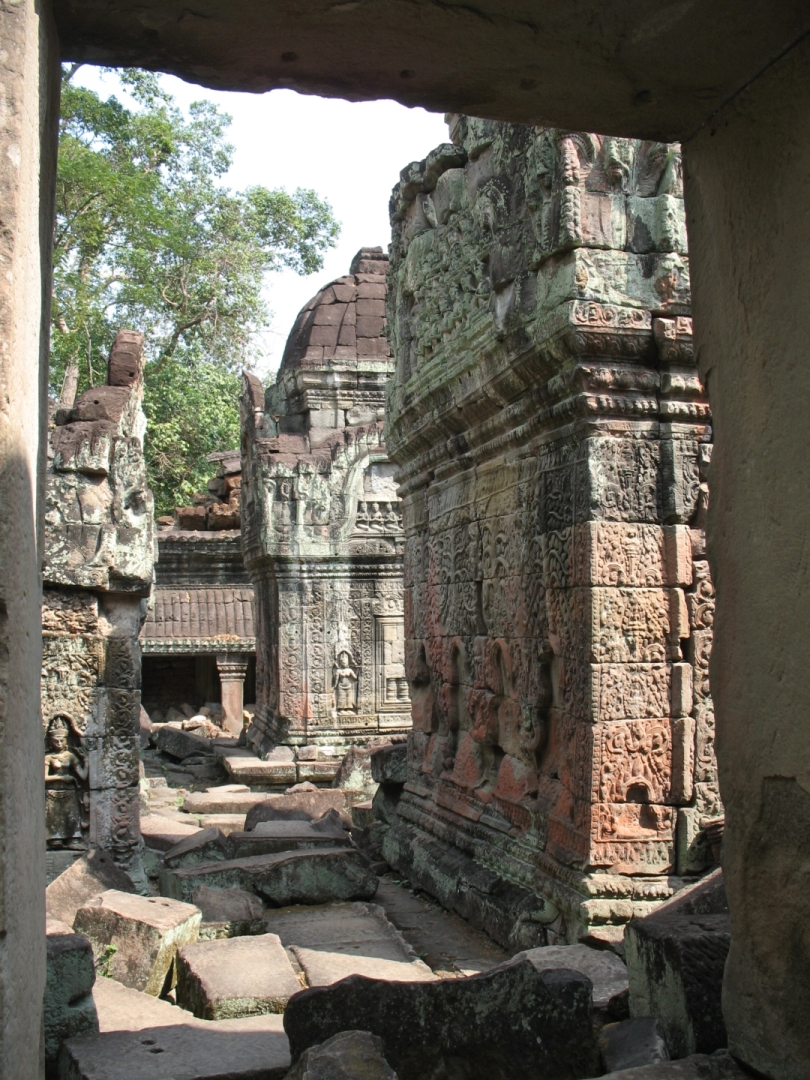This is a photo journal of my trip to Angkor Wat. You have to be there to experience the mist shrouded ruins and the monumental scale of the temples to appreciate the architectural achievements of the Khmer empire. New resorts and hotels are springing up on the road to Angkor Wat – so go before the ancient site is totally suffocated by the modern concrete jungle!

Since our hotel was about 40 minutes from Angkor Wat, our guide came to pick us up at 5 am. Groan!! The serenity of the scene belies the hundreds of tourists jostling for a spot to capture the perfect sunrise.

It’s easy to get carried away by the photo ops, but at least with digital equipment, it’s a lot easier to prune the bounty. Here are some carvings depicting epic battles and dancing apsaras, celestial dancing girls from Cambodia-Hindu mythology. There are 2,000 apsaras in Angkor Wat and no two are alike.


It’s important to know that Angkor Wat is not only a monument from the past but an integral part of Cambodian life: we amazingly saw a bride changing into an elaborate ceremonial dress with the help of her entourage right in front of us, while some enterprising locals parked a beautiful white horse in front of the temple steps so tourists can canter around the Wat.


We visited Preah Khan (Sacred Sword), a complex that was originally a Buddhist monastery built in 1191 AD. It was vandalized during the Hindu resurgence in later centuries. As the second largest temple after Angkor Wat, it remained largely unrestored. The temple’s architecture observes a linear progression that allows vistas down long alleys of doorways, passages, and chambers.

The next stop was Ta Prohm. This atmospheric jungle-shrouded, photogenic ruin was used as a location in the film Tomb Raider. Built in 1186 AD, the temple was abandoned after the fall of the Khmer empire in the 15th century. The towering trees around the site provide some relief from the sun, allowing lichen and moss to sprout from the stone carvings.


We spent sunset at Phnom Bakheng. Fortunately (or unfortunately) our guide dropped us off at the site about an hour early – guess he needed a nap from getting up before dawn… We were able to get a great vantage point before the hordes of tourists ascended the mountain temple. Although not visible in the picture, Angkor Wat sits amidst the jungles 1.5 km to the southeast.

The mass evacuation after the sunset was pretty scary: hundreds of people of all ages and abilities practically stampeded down the steep mountainside in the dark over irregular steps to get out of the park. It was not pretty…


